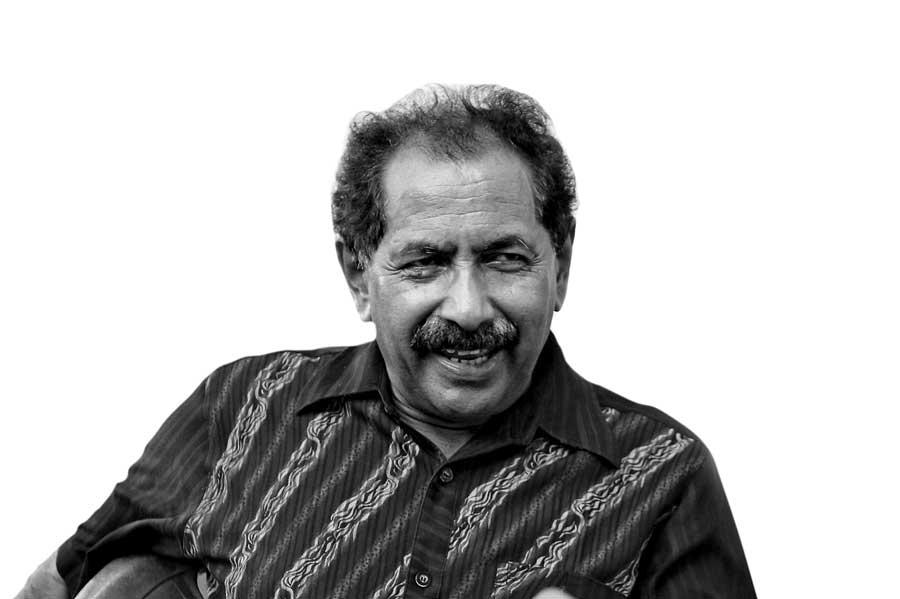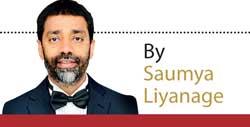Reply To:
Name - Reply Comment

A Tribute to Dr. Jayalath Manorathne
His contribution to the performing arts culture in this country is immeasurable and incalculable
The conclusion that actors like Manorathne had been influenced by Jubal and Stanislavski’s ‘Method’ cannot be justified or verified
Sri Lankan theatre criticism has not paid much attention to actors’ work
 Most Sri Lankan theatre-goers were saddened by the news that veteran actor, playwright and a director Jayalath Manorathne had passed away on 12 January 2020. Manorathne had worked in the Sri Lankan theatre and visual media for over four decades. His contribution to the performing arts culture in this country is immeasurable and incalculable. The various characters he portrayed demonstrates his versatile performative ability to transform as an entertainer. He has performed many characters in Sarachchandra’s stylistic plays and also done roles in dialogue dramas that were a rebuttal against the stylistic tradition of the 1950s. He continued his theatre performance until he got severely ill.
Most Sri Lankan theatre-goers were saddened by the news that veteran actor, playwright and a director Jayalath Manorathne had passed away on 12 January 2020. Manorathne had worked in the Sri Lankan theatre and visual media for over four decades. His contribution to the performing arts culture in this country is immeasurable and incalculable. The various characters he portrayed demonstrates his versatile performative ability to transform as an entertainer. He has performed many characters in Sarachchandra’s stylistic plays and also done roles in dialogue dramas that were a rebuttal against the stylistic tradition of the 1950s. He continued his theatre performance until he got severely ill.
Stanislavski controversy
Sri Lankan theatre criticism has not paid much attention to actors’ work, and how actors have contributed to enhance their theatre and directorial work. Similarly theatre and film actors’ creative interventions have not been critically evaluated or considered as a major part of the creative process of theatre or filmmaking. Manorathne’s acting practice has also not been discussed much in this limited literature.
However, a few writers have written about his approaches to theatre acting. But these writings have unintentionally misled readers by contextualizing Manorathne within the naturalistic acting practice. For instance, Ranjith Dharmakeerthi articulates Manorathne’s acting as a reflection of ‘Method Acting’, also incorrectly referred to as the Stanislavski tradition of acting. Dharmakeerthi argues that the finest example of an actor who follows Stanislavski’s ‘Method Acting’ is Jayalath Manorathne. Dharmakeerthi adds that Neumann Jubal had gone through Stanislavski’s acting practice and had brought this ‘Method’ to Sri Lanka to train local actors.But Jubal came to Sri Lanka and worked at the Peradeniya University in the early 1950s, and Stanislavski passed away in the 1930s. So the conclusion that actors like Manorathne had been influenced by Jubal and Stanislavski’s ‘Method’ cannot be justified or verified.
Estrangement theory
In 1982, my father Hemasiri Liyanage produced a play ‘Chitrage Premakathawa’ (The Love Story of Chitra) in which Manorathne played a vital role. The play was controversial at the time as it depicted the sexual politics in Sri Lankan society. My father has a scrap book of archival documents and papers on his theatre practices. In this collection I found a letter by the late Gamini Haththotuwegama where he writes: “Hemasiri, I liked your play. It was very inventive and free.
Mano was brilliant. The general standard was pleasing. This is your best play and close to our work. Mano was like a good street drama actor – very flexible and very free.”
Haththotuwegama identifies Manorathne as “brilliant” because his performance resembles a ‘street theatre actor’. The acting style of ‘Chitrage Premakathawa’ follows estrangement approaches to acting. Undoubtedly Manorathne had embodied the desired acting style, and Haththetuwegama saw Manorathne’s performance as “free” and “flexible” because of his ability as a ‘street actor’. Unlike in realistic dramas, street drama actors are detached from the familiarity of character portrayal. A street actress’ direct engagement with the immediate audience and ability to perform and spontaneously improvise cannot be imagined within the conventional proscenium theatre. Consequently, Manorathne’s acting needs further analysis to understand how it represented the acting tradition that promoted the theory of estrangement over emotional engagement.
Paradox in acting
|
English Actor David Garrick as Hamlet
|
After the news of Manorathne’s demise, many theatre lovers began posting various notes, poetry, statements and quotes expressing gratitude to the late actor. Among these, my attention was drawn to a video clip where Manorathne faces the camera and spontaneously performs various emotional transformations. The clips seem to be from Indika Ferdinando’s film, ‘ho gaanapokuna’, in which Manorathne played a bus driver. Watching the clip reminded me of French philosopher Denis Diderot’s description of David Garrick’s spontaneous depiction of various emotions. Diderot explains: “Garrick will put his head between two folding doors, and in the course of five or six seconds his expression will change successively from wild delight to temperate pleasure, from this to tranquility, from tranquility to surprise, from surprise to blank astonishment, from that to sorrow, from sorrow to the air of one overwhelmed,
from that to fright, from fright to horror, from horror to despair, and thence will go up again to the point from which he started.”
Similar to Garrick’s acting spontaneity, Manorathne’s ability was not to touch so called internal emotional content, but to perform emotional expressions through his physiognomy. His physicality was a tool through which he expressed emotional engagement with the character and situation. Manorathne’s character portrayals on stage reflect such wittiness and suppleness of the body, and he very often blended seriousness and satirical elements in his performance. Even Manorathne probably did not fully understand his capacity and expertise in the quick manipulation of emotional expressions, because he lived and worked in an era where liberal humanism was the dominant theoretical stance for theatre and other arts.
The physical aspect of acting was intentionally suppressed and replaced with the mental aspect of emotional engagement in acting. In this paradigm, human desires, agonies and social complexities ought to be presented through inner psychical elements. I assume Manorathne himself had a dilemma about whether he was an actor who followed the estrangement theory or psychological realism.
In his book, Paradox of Acting 1830, Diderot explains how Garrick performs myriad emotions at a single moment without being mentally affected by them. Diderot argues that the actor need not to be authentically feeling so called ‘inner emotions’ to portray a character’s emotional expressions. When seeing Manorathne’s portrayal of the driver’s emotional registers or complex task emotions, one doesn’t need to realize whether Manorathne is actually feeling those inner affecters or not. What matters is how well he is performing those task emotions, enabling the audience to be engaged with his performance. Hence, critiques have intentionally or unintentionally marginalised Manorathne as a realistic or naturalistic actor. But I argue he was very much into the psycho-physical tradition that enabled him to be both in stylistic and naturalistic genres.
Naturalistic dilemma
Manorathne’s approaches to theatre acting has been incorrectly and misleadingly categorised as a representation of ‘Method’ or ‘Naturalism’. This tendency is not novel to Sri Lankan theatre criticism. As early as the 17th century when David Garrick was playing leading roles in Shakespeare’s master works, many critics and theatre writers categorised his performances as ‘Naturalism’. But as Joseph R. Roach argued, Garrick’s performances portrayed in paintings at that time signified statue-like figures conveying his approaches to acting not as natural but stylized performances.
Similar accounts can be noticed in Manorathne’s stage performances. Manorathne’s own words also affirm that he understood the modernist assumption of theatre –lokadharmi and natyadharmi — and in both styles his character portrayals are very much psychical. Growing as an actor with Sarachchandra’s stylized theatre and later stepping into dialogue dramas, Manorathne conceptualized the human body and mind as two separate entities. Manorathne argued: “In our mundane life, or in our physical world, we confront many adversaries. Hence, it is a meditational challenge for us to unify our body, mind and voice.”
Jayalath Manorathne is a gifted actor whose capacity expanded over Sinhala speaking theatre and film for decades. His character portrayals signify a man of many talents. His ability to engage with the audience and his stage charisma was unprecedented. Hence, our task would be to revisit his acting legacy and his theatrical contribution to extricate lessons and experiences that can be learnt only from him. This is the utmost honour we could pay to this legendary actor and director.
The writer is a professor of theatre and drama and Dean of the Faculty of Graduate Studies, University of the Visual and Performing Arts, Colombo.